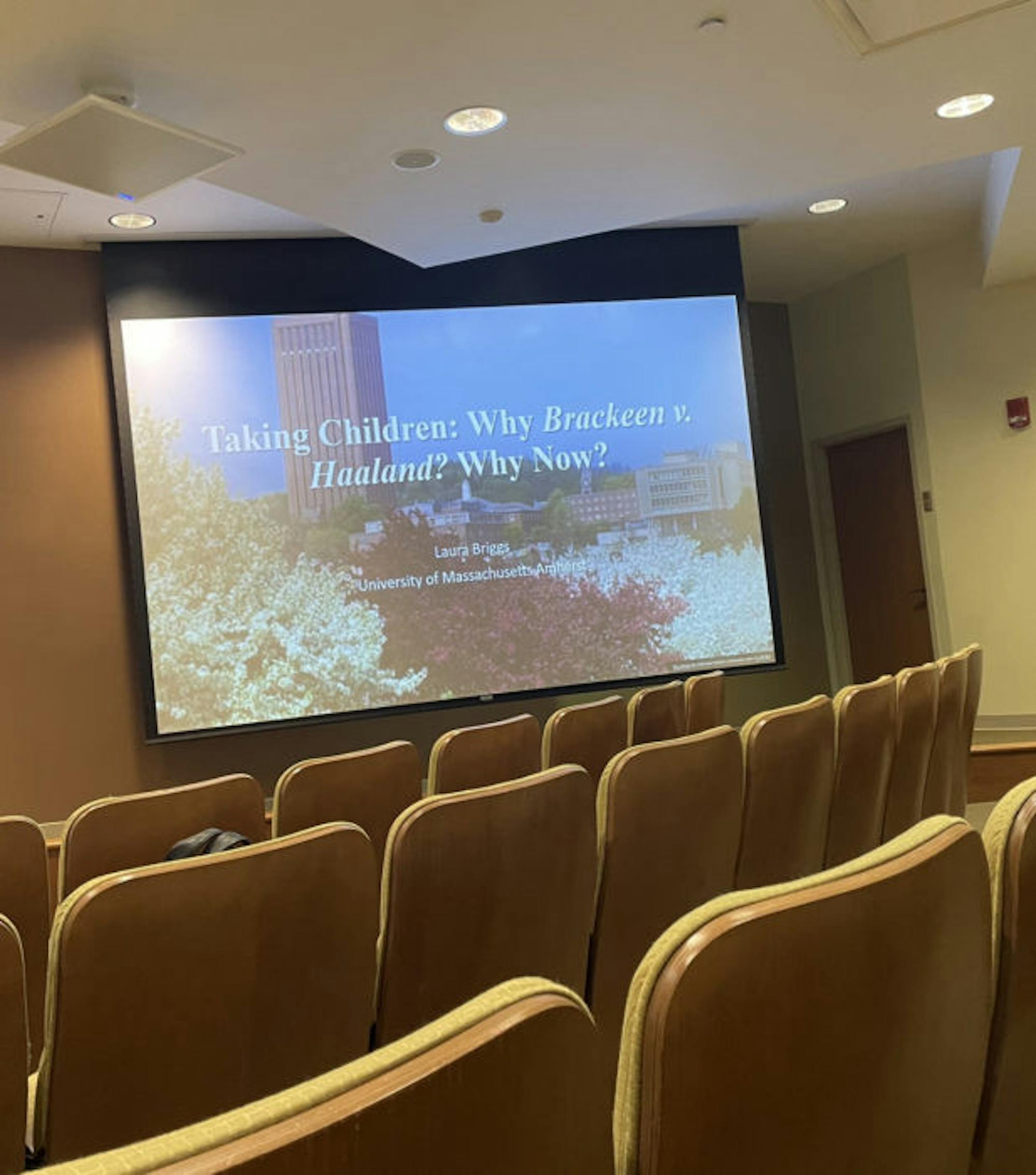
Laura Briggs, an author and professor at the University of Massachusetts Amherst, discussed an upcoming Supreme Court ruling on the Indian Child Welfare Act’s adoption policy in a lecture Monday afternoon. The event was sponsored by the gender studies program and the Reilly Center for Science, Technology and Values and was the third event in a yearlong series titled “Reproductive Justice: Talks for Solidarity and Social Change.”
“This June, the Supreme Court will issue an important, much anticipated ruling on a reproductive justice case,” she said. “It’s not about mifepristone or any abortion medication, nor about whether Tennessee or Texas can block miscarriage care designed to save people’s lives or keep them out of the ICU in the name of preventing what those states called abortions.”
The anticipated ruling is regarding Brackeen V. Halland — a case which will take up the constitutionality of the Indian Child Welfare Act of 1978’s policies on adoption. The law was enacted to protect American Indian children from removal from their tribes to be adopted by non-Indigenous families, though the states of Texas, Indiana and Louisiana, as well as individual plaintiffs, argue that the law violates the 10th Amendment.
“Adoption and fostering are often seen as particularly generous act a way of bringing a small person into intimate relationship with a household — sometimes of strangers and we’re raising them to adulthood,” Briggs said. “It can certainly be that but it’s also about taking someone away from the person who birthed [them] to maybe raise them for a while.”
Briggs contextualized adoption through the descriptions of what it does at its best and worst.
“At best, it’s full of loss for birth parents and child and especially in the case of closed adoptions for generations to come,” Brigg said. “At worst, adoption and fostering are full of coercion and even violence as police and foster agencies tear a child from the arms of parents or others who love them and fully intend to raise them.”
Briggs discussed a statement written by justice Samuel Alito regarding abortion and adoption.
“The outcome of outlawing abortion in the state should not trouble us because there’s always adoption so people can simply carry the pregnancy to term, bear the medical risks of it and then not raise the child,” Alito wrote.
Briggs discussed the history of adoption and the effects on Indigenous communities.
“State governments begin going onto reservations or moving children to foster care and adoptions, mostly white homes, as boarding schools begin to enroll fewer and fewer Native kids, drawing on centuries of efforts to reform Indigenous peoples’ family, kinship and gender practices,” she said. “States argued that leaving children in the care of grandmothers and other kin ... while living without running water or electricity was tantamount to child neglect.”
Briggs discussed the strategy of separating children from tribal nations and provided context into what the ultimate goal may be for the gaming industry. Betting operations threatened by the competition of Indian gaming want to see an end to the existence of tribal nations, Briggs explained.
“The strategy of separating children from tribal nations means less political power and fewer people willing to fight for nations’ control of resources,” she said. “As with the gaming context, the ultimate goal may well be to return to the policies of the termination era of the 1950s and 60s when Congress passed laws to end the legal existence of tribal nations and their control over land, water and minerals.”
Fostering and adoption enforce a racial hierarchy, Briggs said. She framed the issue by saying that some groups are rendered powerless.
“To intensify the way as a group, it’s rendered powerless and outside the body politic,” she said. “Because if you don’t have the power to raise your own children, if the state or religious groups can reach down to the intimate relationships between parent and child ... without good cause, or due process, you essentially don’t have meaningful rights.”
The standard used in adoption is a best-interests standard, which Briggs said is easily twisted and transfers kids out of their households.
“It becomes all too common sense to use the foster care and adoption system to transfer the kids of working and poor folks to middle class households,” Briggs said.
Read More
Trending









